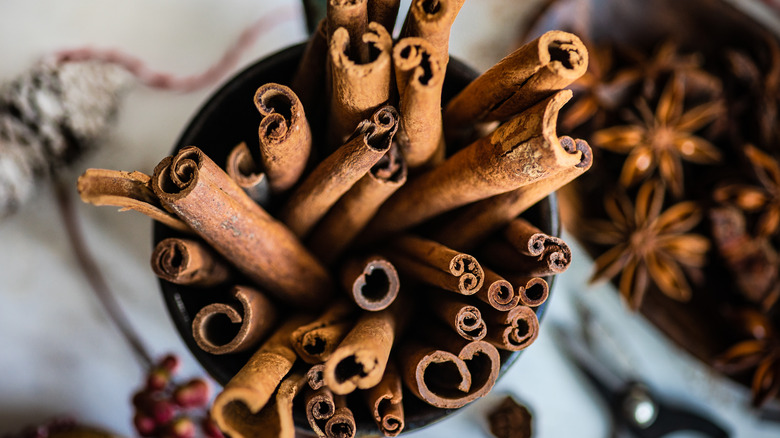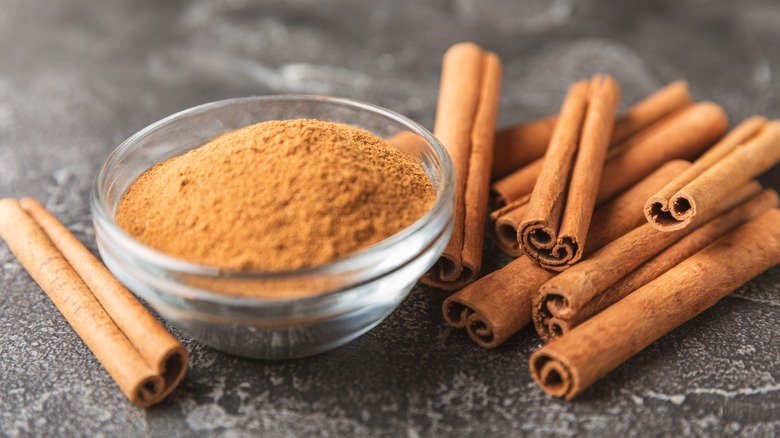Popular Cinnamon And Spice Blends Found To Have High Levels Of Lead
Baking season means time for all the treats that feature warming spices, from apple cinnamon slow cooker steel cut oatmeal to pumpkin spice everything (including the rim on your fall cocktail). And you probably don't need to memorize the definitive guide to cinnamon to know that one of the most prominent flavors is this familiar spicy favorite.
Cinnamon's ubiquitousness makes it all the more alarming to learn the results of a report by Consumer Reports, which delivered news that many common brands of cinnamon include concerning levels of lead. The independent nonprofit began its examination of cinnamon following a Food and Drug Administration (FDA) finding of high lead levels in certain kids' cinnamon applesauce pouches in the fall of 2023, and subsequent FDA notices in the spring and summer of 2024 , which directed consumers to discard and avoid purchasing cinnamon distributed by a number of brands.
Consumer Reports conducted its own expanded investigation, using 36 different brands of cinnamon and cinnamon-containing spice blends (like garam masala and five-spice). It discovered that 12 of these options contained high levels of lead, prompting questions. The FDA does not have a federal limit for lead levels in spices, but New York state, where some of the cinnamon products tested were acquired, has a legal limit of 1 part per million of lead. The 12 brands found to contain high levels of lead were above this limit, and several other brands tested had lead levels that were close to the threshold.
Safety concerns around lead and cinnamon
While there is some natural explanation for the presence of lead in cinnamon (it can come from soil or environment in which it is grown), there are more troubling explanations — including the fact that some producers may include lead chromate intentionally, either for that reddish color consumers expect, or because it will add weight to the package.
According to the Environmental Protection Agency, lead is linked to a range of health issues, from memory problems in adults to challenges in behavior and learning and even impaired hearing in children — among others. Cinnamon is sometimes associated with higher lead risk because cinnamon trees' long growth period provides more time for the trees to absorb lead from their surrounding soil.
The quantity of cinnamon most people ingest with their favorite treats isn't likely to be dangerous for healthy adults. But children (who are more susceptible to lead absorption) and women who are pregnant are the most at risk — and in general, avoiding the consumption of lead is the best case scenario.
While none of the 36 tested brands were entirely free of lead, some of the variants on the lower end were 365 Whole Foods Market Organic Ground Cinnamon, McCormick Cinnamon, Morton & Bassett 100% Organic Ground Cinnamon, and Sadaf Cinnamon. When in doubt, authorities encourage consumers to purchase from trusted, name-brand producers who are more likely to test for heavy metals as part of their quality control process. This will help you to have peace of mind when enjoying your next pumpkin spice treat.

